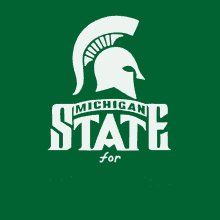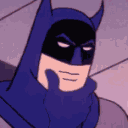Air defense missiles among weaponry US is withholding from Ukraine, AP sources say
The Trump administration will hold back delivering to Ukraine some air defense missiles, precision-guided artillery and other weapons as part of its announced pause to some arms shipments amid U.S. concerns that its own stockpiles have declined too much, officials said.
The details on the weapons in some of the paused deliveries were confirmed by a U.S. official and former national security official familiar with the matter. They both requested anonymity to discuss what is are being held up as the Pentagon has yet to provide details.
The pause includes some shipments of Patriot missiles, precision-guided GMLRS, Hellfire missiles and Howitzer rounds.
It is a setback for Ukraine, which has faced increasing, and more complex, air barrages from Russia during the more than three-year-long war and as President Donald Trump remains determined to quickly conclude a conflict that he had promised as candidate to end of Day One of his second term.
Click on the link for the full article
The Ukraine War
Russia launches largest missile and drone barrage on Kyiv since war in Ukraine began
Waves of drones and missiles targeted Kyiv overnight in the largest aerial assault since Russia’s invasion of Ukraine began more than three years ago, officials said Friday, amid a renewed Russian push to capture more of its neighbor’s land.
Hours after the barrage that killed one person and wounded at least 26 others, including a child, Ukrainian President Volodymyr Zelenskyy said he had a “very important and productive” phone call with U.S. President Donald Trump.
The two leaders discussed how Ukrainian air defenses might be strengthened, possible joint weapons production between the U.S. and Ukraine, and broader U.S-led efforts to end the war with Russia, according to a statement by Zelenksyy.
Asked Friday night by reporters about the call, Trump said, “We had a very good call, I think.”
When asked about finding a way to end the fighting, Trump said: “I don’t know. I can’t tell you whether or not that’s going to happen.”
Click on the link for the full article
Waves of drones and missiles targeted Kyiv overnight in the largest aerial assault since Russia’s invasion of Ukraine began more than three years ago, officials said Friday, amid a renewed Russian push to capture more of its neighbor’s land.
Hours after the barrage that killed one person and wounded at least 26 others, including a child, Ukrainian President Volodymyr Zelenskyy said he had a “very important and productive” phone call with U.S. President Donald Trump.
The two leaders discussed how Ukrainian air defenses might be strengthened, possible joint weapons production between the U.S. and Ukraine, and broader U.S-led efforts to end the war with Russia, according to a statement by Zelenksyy.
Asked Friday night by reporters about the call, Trump said, “We had a very good call, I think.”
When asked about finding a way to end the fighting, Trump said: “I don’t know. I can’t tell you whether or not that’s going to happen.”
Click on the link for the full article

China wrote: Sat Jul 05, 2025 10:05 am
When asked about finding a way to end the fighting, Trump said: “I don’t know. I can’t tell you whether or not that’s going to happen.”
Click on the link for the full article

Hmmmm. It seems like I remember you saying just six or eight months ago that you could end it in 24 hours. Call me crazy, but something seems a little....off.
The essence of fascism is to make laws forbidding everything and then enforce them selectively against your enemies. -John LesCroart
Something?The Sisko wrote: Sat Jul 05, 2025 3:45 pmChina wrote: Sat Jul 05, 2025 10:05 am
When asked about finding a way to end the fighting, Trump said: “I don’t know. I can’t tell you whether or not that’s going to happen.”
Click on the link for the full article
Hmmmm. It seems like I remember you saying just six or eight months ago that you could end it in 24 hours. Call me crazy, but something seems a little....off.

A lot of things.

Russia on the edge of economic collapse after 40 months of war
Forty months is a long time in a war. Even more so for an economy already burdened by dangerous dependencies on a fossil-fuel-based world that, with luck, will be consigned to the history books within a few decades. Nearly three and a half years after Vladimir Putin gave the order to invade Ukraine — thus burning all bridges with the West — Russia is now trapped in a maze with no easy way out: sluggish growth and soaring prices, with annual increases in the double digits.
The St. Petersburg International Economic Forum, once a showcase and symbol of Russia’s strength in the global market, turned a couple of weeks ago into a parade of Putinism — though not a particularly cheerful one. “We are on the brink of a recession,” admitted Economic Development Minister Maxim Reshetnikov. The reserves that had supported the country’s finances in recent years, added Central Bank Governor Elvira Nabiullina, “are depleted.”
Little remains of the Russia of late 2021, when verbal clashes with Kyiv were intensifying, but few — very few — suspected the step Putin was about to take. Today, in July 2025, the Russian Central Bank finds itself in a paradoxical crossroads: waging a double battle against inflation and against the Kremlin itself. Something like dancing a waltz on a barrel of dynamite.
“The country is in a state of stagflation,” the Centre for Macroeconomic Analysis and Short-Term Forecasting (TsMAKP). “Economic dynamics are declining rapidly, and there is a risk of a technical recession in the second and third quarters, but inflation remains high.”
It’s been less than three weeks since the central bank — supposedly independent from government control — symbolically lowered interest rates: from 21% to 20%. In doing so, it fulfilled a long-standing demand from the Kremlin. It was the first rate cut since September 2022, the year of Russia’s invasion of Ukraine. This marked a break from a long cycle of interest rate hikes aimed at curbing rising prices.
The situation, however, remains dire. Official inflation still hovers around 10% year-on-year, although several independent institutes estimate the real figure to be above 15%. With military spending still running wild, “risks remain skewed towards inflation,” warned Nabiullina. “Our rate cut approach requires greater caution.”
The contradiction facing the central bank is a true reflection of the current state of the Russian economy, which has long dropped out of the world’s top 10 in terms of size. By now, even the Kremlin is beginning to acknowledge the obvious: that the economic boom driven by the war industry is coming to an end and that the savings made before the war are no longer enough.
Click on the link for the full article
Forty months is a long time in a war. Even more so for an economy already burdened by dangerous dependencies on a fossil-fuel-based world that, with luck, will be consigned to the history books within a few decades. Nearly three and a half years after Vladimir Putin gave the order to invade Ukraine — thus burning all bridges with the West — Russia is now trapped in a maze with no easy way out: sluggish growth and soaring prices, with annual increases in the double digits.
The St. Petersburg International Economic Forum, once a showcase and symbol of Russia’s strength in the global market, turned a couple of weeks ago into a parade of Putinism — though not a particularly cheerful one. “We are on the brink of a recession,” admitted Economic Development Minister Maxim Reshetnikov. The reserves that had supported the country’s finances in recent years, added Central Bank Governor Elvira Nabiullina, “are depleted.”
Little remains of the Russia of late 2021, when verbal clashes with Kyiv were intensifying, but few — very few — suspected the step Putin was about to take. Today, in July 2025, the Russian Central Bank finds itself in a paradoxical crossroads: waging a double battle against inflation and against the Kremlin itself. Something like dancing a waltz on a barrel of dynamite.
“The country is in a state of stagflation,” the Centre for Macroeconomic Analysis and Short-Term Forecasting (TsMAKP). “Economic dynamics are declining rapidly, and there is a risk of a technical recession in the second and third quarters, but inflation remains high.”
It’s been less than three weeks since the central bank — supposedly independent from government control — symbolically lowered interest rates: from 21% to 20%. In doing so, it fulfilled a long-standing demand from the Kremlin. It was the first rate cut since September 2022, the year of Russia’s invasion of Ukraine. This marked a break from a long cycle of interest rate hikes aimed at curbing rising prices.
The situation, however, remains dire. Official inflation still hovers around 10% year-on-year, although several independent institutes estimate the real figure to be above 15%. With military spending still running wild, “risks remain skewed towards inflation,” warned Nabiullina. “Our rate cut approach requires greater caution.”
The contradiction facing the central bank is a true reflection of the current state of the Russian economy, which has long dropped out of the world’s top 10 in terms of size. By now, even the Kremlin is beginning to acknowledge the obvious: that the economic boom driven by the war industry is coming to an end and that the savings made before the war are no longer enough.
Click on the link for the full article


